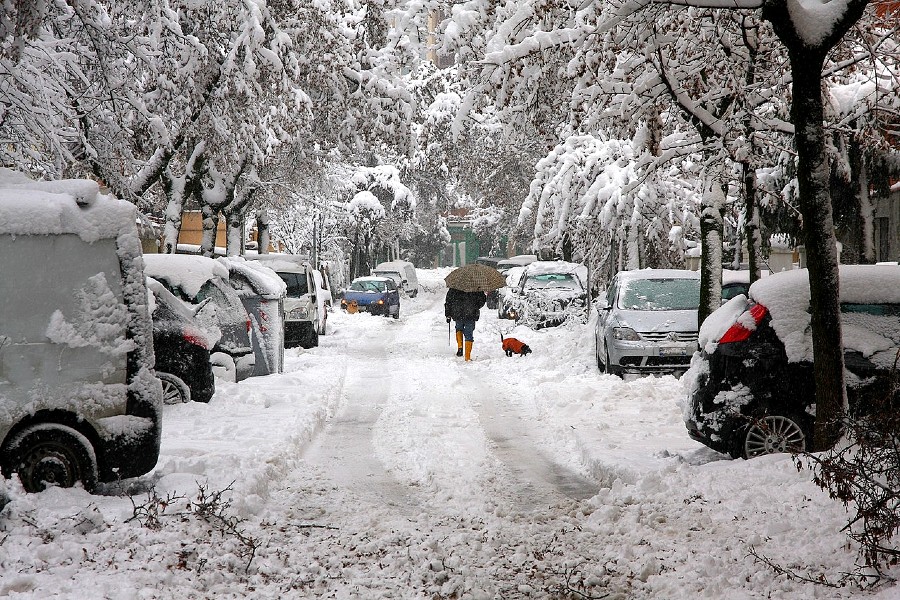
Natural disasters like storms can wreak havoc on your home, leaving behind a trail of destruction that needs immediate attention.
From minor damages like broken shingles to major structural issues, storm damage requires a systematic approach to repair and restore your home to its former glory. In this comprehensive guide, we’ll explore essential tips and steps for repairing your home after a storm, ensuring safety, efficiency, and long-term resilience.
Why Professional Services are Crucial for Effective Repairs
When it comes to repairing storm damage, hiring professional services is crucial for ensuring effective and long-lasting repairs. Professional storm damage services bring expertise, experience, and specialized equipment to the table, enabling them to assess the damage accurately and develop a comprehensive repair plan. They understand the complexities of storm damage, from structural issues to electrical hazards, and have the skills to address them safely and efficiently.
Moreover, professional services often work with insurance companies, helping you navigate the claims process and maximize your coverage. By entrusting your storm damage repairs to professionals, you can have peace of mind knowing that your home will be restored to its pre-storm condition with quality workmanship and attention to detail.
Assessing the Damage
Start by inspecting the exterior of your home, including the roof, siding, windows, and doors. Look for signs of water damage, missing or damaged shingles, cracked windows, and dented doors. Take note of any structural issues such as leaning walls or sagging ceilings.
Inside your home, check for water leaks, electrical problems, and damage to walls, ceilings, and floors. Pay special attention to the basement, as it is prone to flooding during storms. Use a flashlight to inspect dark areas and be cautious of potential hazards like exposed wires or unstable structures.
Safety First
Prioritize safety for yourself and your family. If the damage is extensive or poses immediate risks such as structural instability or electrical hazards, evacuate the premises and contact emergency services. Always wear protective gear such as gloves, goggles, and a mask when handling debris or conducting repairs.
Secure the Area
Securing the area is essential to prevent exacerbating the damage and ensure safety. Utilize tarps or plywood to cover damaged roofs or windows, effectively thwarting water intrusion and shielding against ongoing exposure to the elements. During cleanup, handling debris with caution to avoid injuries or causing additional harm to the property. This proactive approach not only minimizes the risk of further damage but also lays a foundation for efficient and successful repair efforts.
Document the Damage
Before starting repairs, document the damage thoroughly. Take photographs and videos of the affected areas from multiple angles, capturing both close-up details and wider shots. Keep a detailed record of the damage, including dates, descriptions, and any relevant insurance information. This documentation will be essential for insurance claims and tracking the progress of repairs.
Contact Your Insurance Provider
After assessing the damage and documenting it, contact your insurance provider to initiate the claims process. Provide them with the detailed documentation you’ve gathered, including photographs, videos, and written descriptions of the damage. Keep copies of all communication with your insurance company for reference.
Roof Repairs
One of the most common areas of damage during storms is the roof. Inspect your roof for missing or damaged shingles, cracked flashing, and leaks. Replace missing shingles and seal any gaps or cracks to prevent water intrusion. Consider hiring a professional roofer for extensive roof repairs or replacements, as working at heights can be dangerous without proper training and equipment.
Structural Integrity
Ensure the structural integrity of your home by inspecting walls, ceilings, and foundations for signs of damage. Look for cracks, bulges, or leaning walls, which may indicate structural issues that require immediate attention. Consult a structural engineer or licensed contractor for a professional assessment and recommendations for repairs.
Electrical Systems
Storms can cause electrical damage, posing fire hazards and safety risks. Inspect your electrical systems for exposed wires, water damage, and malfunctioning outlets or switches. If you suspect electrical issues, turn off the power to the affected area and contact a licensed electrician for repairs. Never attempt to repair electrical systems yourself unless you’re trained and qualified to do so.
Plumbing and Water Damage
Water damage is a common consequence of storms, leading to mold growth, rot, and structural problems. Inspect your plumbing for leaks, clogs, or damage caused by flooding. Dry out waterlogged areas promptly and address any mold or mildew growth with appropriate cleaning solutions. Consider installing a sump pump or waterproofing measures to prevent future water damage.
Windows and Doors
Check your windows and doors for damage such as broken glass, damaged frames, or leaks. Replace broken or cracked windows and repair damaged frames to ensure proper insulation and security. Seal gaps and cracks around windows and doors to prevent water intrusion and drafts.
Landscaping and Exterior
Storms can also damage your landscaping and exterior features such as fences, decks, and driveways. Inspect outdoor areas for fallen trees, branches, or debris that may pose safety hazards. Trim overhanging branches and remove damaged trees or shrubs. Repair or replace damaged fences, decks, and pathways to restore functionality and aesthetics.
Insurance Claims and Documentation
Keep detailed records of all repair expenses, receipts, and invoices for insurance purposes. Work closely with your insurance provider to ensure that you understand the coverage and reimbursement process. Document any additional living expenses incurred due to temporary displacement from your home during repairs.
Preventative Measures
Once repairs are complete, take proactive measures to protect your home from future storms and natural disasters. Invest in storm-resistant materials, such as impact-resistant windows, reinforced roofing, and storm shutters. Keep trees and landscaping well-maintained to reduce the risk of falling branches or debris. Develop a disaster preparedness plan and assemble an emergency kit with essential supplies.
Repairing your home after a storm requires careful assessment, planning, and execution to ensure safety, efficiency, and long-term resilience. By following essential tips such as assessing the damage, prioritizing safety, documenting the damage, contacting your insurance provider, hiring professionals when needed, and taking preventative measures, you can effectively restore your home and protect it against future storms. Stay proactive, stay safe, and safeguard your home for years to come.
Become a Harlem Insider!
By submitting this form, you are consenting to receive marketing emails from: . You can revoke your consent to receive emails at any time by using the SafeUnsubscribe® link, found at the bottom of every email. Emails are serviced by Constant Contact








